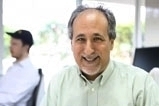UAE wants its fighters its own way
Last Updated: Sep 29, 2009

If the UAE signs for 60 Rafale fighter aircraft from France's Dassault later this year, as some expect, in a deal valued at 6 billion (Dh32.2bn) to 10bn, it will be purchasing a jet more advanced than those being flown by the French air force.
A more powerful engine, a new air-to-air missile and cutting-edge radar systems are some of the requirements the UAE has made to Dassault and its French partners Safran, Thales and MBDA, according to media reports. Such requests for upgrades and modifications have been a central theme of the UAE's arms deals since the 1980s as it faced a major constraint in its homeland security efforts: manpower.
While the UAE, blessed with oil wealth, can afford whatever equipment or technology it wants for its Armed Forces, its relatively small population means it could have difficulty maintaining and operating them. "The objective was to compensate for this constraint in manpower, and we decided to go not for quantity but for quality, regardless of the military platform, whether it was tanks or aircraft," says Khalid al Bu-Ainnain, who served as Commander of the UAE Air Force and Air Defence until 2006 and now is the chairman of Baynuna Group, a holding company based in Abu Dhabi involved with the defence industry.
For the past two decades, it has financed modifications of military technology to suit its unique needs in the Gulf. These needs include fighter jets with engines powerful enough to take off with maximum fuel and arms caches in hot weather, or radar that can simultaneously scan airborne and land-based threats. In some cases, the UAE has earned substantial revenues from royalties if other countries purchased the technology it helped develop.
"The policy of the UAE since the mid-1980s was that they will never, ever, take any platform unless they modify it and upgrade it to fulfil the UAE requirement," Mr al Bu-Ainnain said. Mr al Bu-Ainnain has plenty of experience, as he was trained to fly Mirage jets in the late 1980s and helped to fly the first deliveries from France to the Emirates. Foreign defence contractors typically manufacture products to suit their national militaries, which make up their biggest customer and primary funding source, and then market this product for export sales. "Whether it is the US, the French or Russians, they do it according to their own needs. And that may cover 80 or 90 per cent of your requirement," says Mr al Bu-Ainnain.
So with its customisation programme, the UAE has weaponry uniquely suited to the geography, climate and security needs in the Gulf. This includes the F-16 Fighting Falcon from Lockheed Martin. The UAE funded nearly $3bn in research and development costs to produce the "Block 60" variant for its 80-aircraft order in 2004. The UAE's so-called Desert Falcons provide an improved "active-scanned" radar from Northrop Grumman, giving the aeroplane the capability to simultaneously track and destroy both ground and air threats.
It also came with enlarged primary fuel tanks, freeing up space on the underside of the fighter jet for additional weaponry. US media noted at the time that this sale to the UAE was "the first time the US has sold a better aircraft overseas than its own forces fly". And if Lockheed Martin sells Block 60 F-16s to other countries, the UAE stands to earn substantial royalties. This is already the case with the Mirage 2000, which Dassault sold to the UAE in the late 1980s, and again in the late 1990s.
After funding several upgrades to the Mirage, including its weapons system, radar, avionics and electronic warfare, the UAE earned hundreds of millions of dollars in royalties from subsequent sales, according to Mr al Bu-Ainnain. Now, UAE interest in the Rafale has attracted international attention, and not just because the Emirates is coming off multibillion-dollar purchases of the F-16 and the Mirage within the past 11 years.
The Emirates could be the Rafale's first export sales win for Dassault after losing export campaigns in Morocco, South Korea and Singapore to jets such as the F-15 from Boeing, the F-16 and the Eurofighter Typhoon. Another promising prospect for Dassault is in Brazil, which could decide this year to purchase 36 Rafales. One of the UAE's requirements for a purchase is for Dassault to buy back its fleet of 63 Mirage 2000-9 fighter jets to clear the way for the Rafale, which is a fourth-generation fighter aircraft representing 15 years of advancements beyond the third-generation Mirage. Next page
Business
Summary
Requests for upgrades and modifications to defence contractors have been a central theme in the Emirates' purchase of military hardware.







